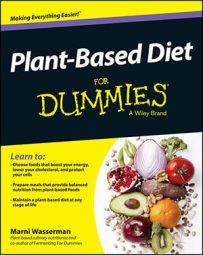Hydration is an important but often neglected subject. The body is made up of about 60 percent water, and yet many people don’t drink nearly as much as they should to keep their bodies well hydrated. Many plants are made up mostly of water, which is good news for plant-based eaters, but you still need to down some good-quality (preferably filtered) H2O several times a day.
If you aren’t hydrated, your body can’t metabolize, process, and function at its best. By the time you feel thirsty, you’re already dehydrated. When you’re dehydrated, you can experience everything from fatigue to headaches to cramping.
Drink water throughout the day. Whether it’s plain water, lemon water, or herbal tea, just make sure to get it in. Opinions differ on how much you should drink, but a typical recommendation is to drink half your body weight in ounces; if you weigh 150 pounds, you should drink about 75 ounces (about nine cups) of water a day.
This may not be realistic, but at least make sure you’re drinking something — and that doesn’t mean coffee or other caffeinated beverages (because these can dehydrate your body further).
Be careful about drinking too much water at meals. Diluting your stomach acids can impair digestion.
People often wonder whether they should drink bottled water or tap water. This is an ongoing source of research and controversy. On one hand, you have water that is being stored in a plastic bottle, which can leach all kinds of toxins into the water, and who really knows the source?
On the other hand, do you trust your local water treatment plant to filter the water that comes through your pipes to the point that it’s pure enough for your drinking pleasure? Most city water and even rural water isn’t as clean as you’d like to think; debris, waste, and agricultural runoff all leak into our water systems.
The best solution is to buy your own filters so that most of what you’re consuming is clean. Search online to find the filtration system that’s best for you. You can place a simple one on your faucet, invest in a triple filter installed beneath the sink, or use anything in between.

